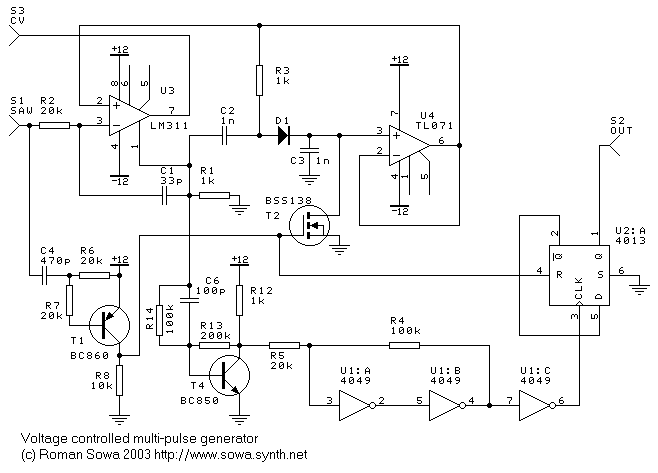
This is little circuit inspired by
5Pulser Waveform Generator of Ian Fritz. Ian uses bargraph controller to achieve his
goal. Unfortunately I couldn't find this chip in SMD, and being SMD-freak that was enough
encouragement to find another solution. The circuit has to generate pulses of variable length
and quantity depending on control voltage. One can do it with several comparators, but
to have, say, 5 pulses per cycle, 10 comparators are needed. Using dot-mode bargraph
controller like Ian has used, simplifies the core circuit to one IC. But maybe the same
thing can be done with one comparator working at jumping levels:

last modified January 10 2004
(c) 2003 Roman Sowa